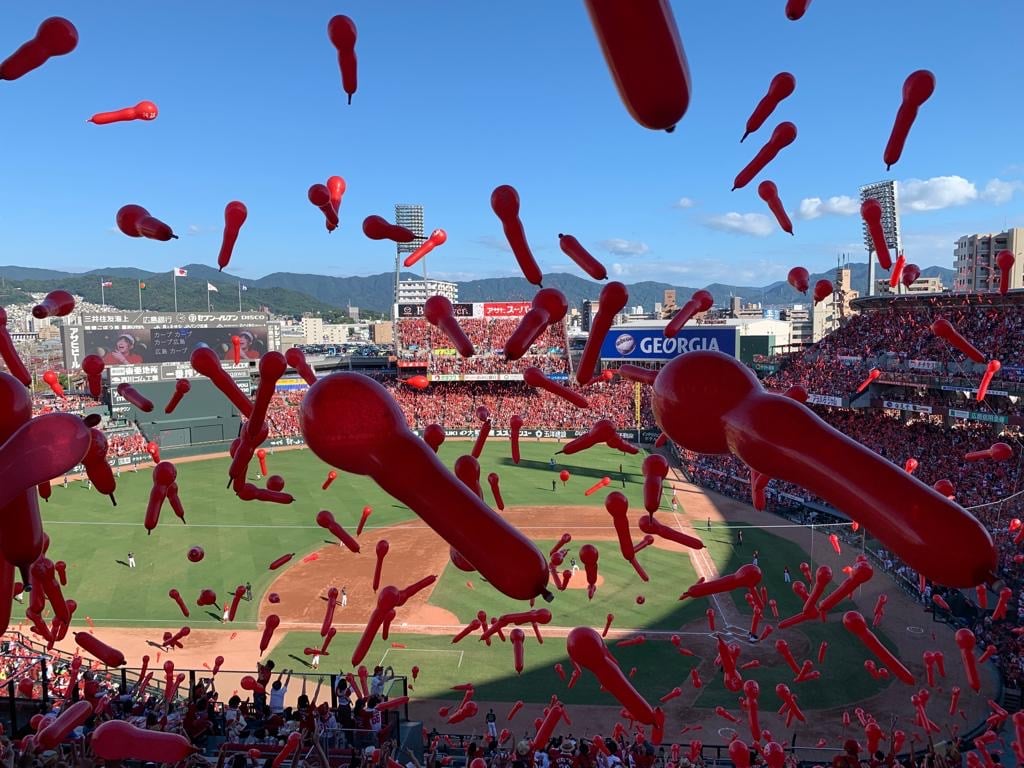
One of the greatest accomplishments in a baseball fan’s life is catching a game at all 30 Major League Baseball ballparks. It’s a long, arduous feat that requires dedication, patience, and often a little extra spending cash. Fans who accomplish this feat are truly dedicated to the game and the beauty it brings, regardless of location.
But across the sea in Japan lies an entirely new gauntlet for avid baseball fans to try: Nippon Professional Baseball (NPB). With twelve different stadiums up and down the country, it can be daunting to know where to go in a short time period or what might provide the best fan experience.
This list finally answers a question avid baseball fans might be wondering: where is the best place in Japan to catch a game?
12. Nagoya Dome (Chunichi Dragons)

Beginning our list is the less-than-perfect Nagoya Dome, located in the city it’s named for and hosting the Chunichi Dragons. The Dome was built in 1997, making it one of the newer stadiums in the NPB, and has entirely indoor seating. Attendance is notoriously low, making for a bit of a dry environment by Japanese standards. On the plus side, the dome lights up after the game, putting on a dazzling show when the Dragons win.
The Dome isn’t necessarily bad, it simply does not have any interesting features outside of the spunky play of the Dragons. It is a bit of a walk from the subway station, but at least on the way there are cool oversized player photos to distract you and a nice mall on the way to get a local bite to eat before the game. We recommend checking out Misokatsu Yabaton, a baseball-themed restaurant, for the regional specialty of miso katsu (breaded pork cutlet with miso sauce), as well as a matcha green tea donut from Krispy Kreme!
The Dragons aren’t half-bad either.
11. MetLife Dome (Saitama Seibu Lions)
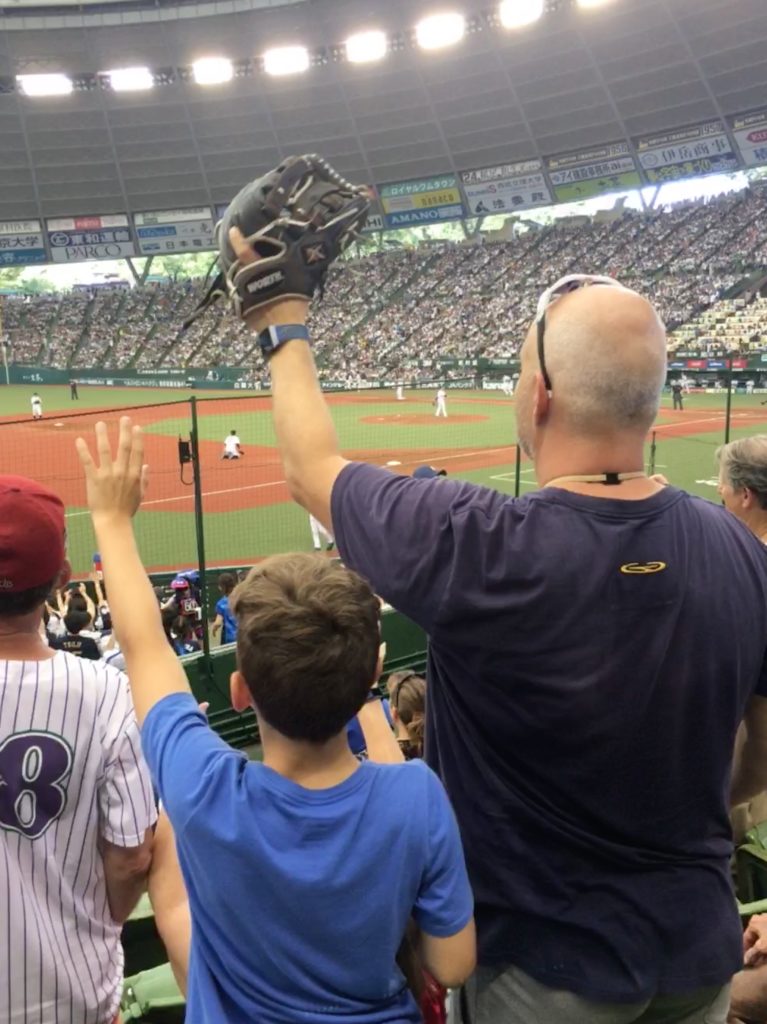
Be warned: this stadium looks appealing, but can easily trap you in a heated labyrinth of stairs and private railways. The home of the Saitama Seibu Lions was built in 1978 and a roof was dropped on top in 1998, creating the cool feature of missing a wall in the outfield, giving it a bit of an outdoor vibe; home run balls can even fly out! It also has a lovely plaza for fans to purchase food and souvenirs in. That, however, is where the fun stops.
For tourists, the game can be difficult to even get to, as they need to take the private Seibu Railway all the way to Saitama from Tokyo to even reach the stadium. Once you arrive, you shuffle through one of two crowded entrances and then may need to climb long stairways to even reach your seats, as the stadium is built into a hill.
And when you finally sit down and try to relax, you’ll realize that the dome can be hot. Very hot. The open dome allows hot air to waft in and get trapped within; so much so that players have even left games at the dome with heat stroke! Now, what about earlier in the summer, when the air is cooler? Well, it can get quite cold and windy and the open sides make it possible to be rained on even though you’re in a “dome!”
Beyond that, it’s not half-bad. Queen even performed a concert there in 1982, and the Lions’ oendan (fan club) has true team spirit.
10. ZOZO Marine Stadium (Chiba Lotte Marines)

“The House that Bobby V built,” or the home of the Chiba Lotte Marines, is an experience based on fan spirit and dedication. Our list’s first open-air stadium was built in 1990 in the waterfront suburb of Chiba City, and even sits right on the water, although no views are provided.
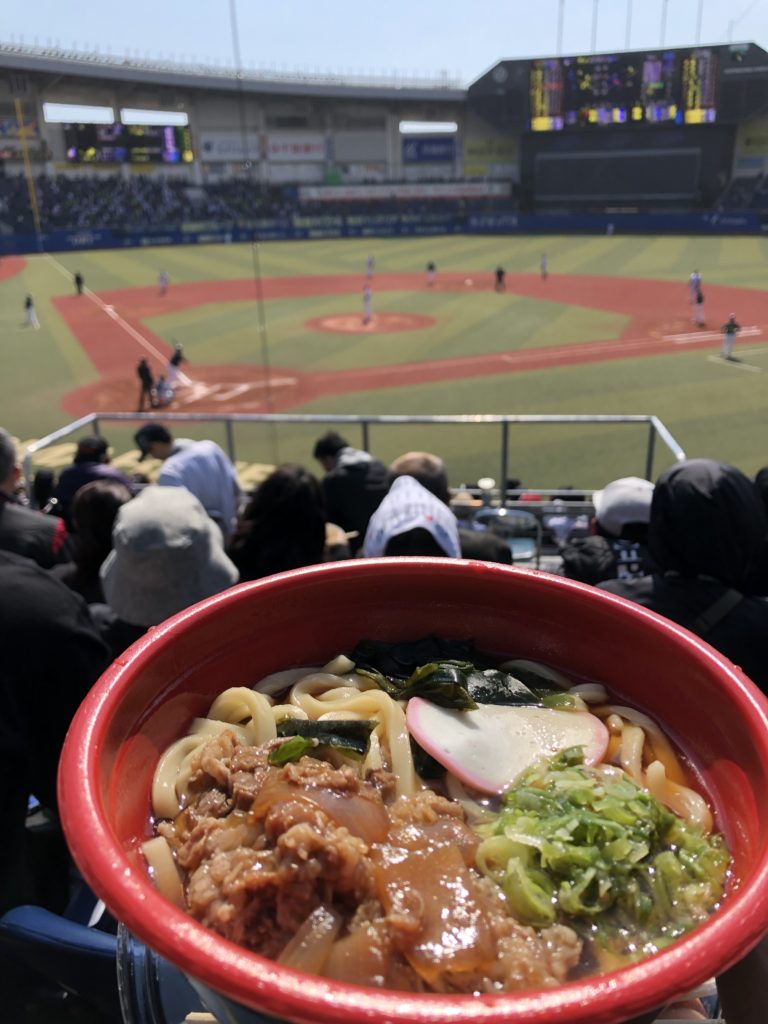
It can be a bit of a journey for tourists from Tokyo, and the marine-front temperatures often require fans to bring jackets (for anyone that went to a game at Candlestick Park in San Francisco, you know what I mean), but the best way to keep warm is to do just as the boisterous Marines fans do – jumping up and down and yelling for all nine innings. The dedicated Marines fans, cheering as if they have a chip on their shoulder, can be quite the spectacle to watch, keeping this ballpark from sinking lower in our rankings. The circular stadium lacks distinct features and aesthetic, but old-school fans of Three Rivers or Veterans Stadium will quickly feel right at home.

For the dedicated, crazy baseball fan we all know and love, turn them to this house of old-school ball. For the rest of us, maybe consider the rest:
9. Fukuoka PayPay Dome (Fukuoka SoftBank Hawks)
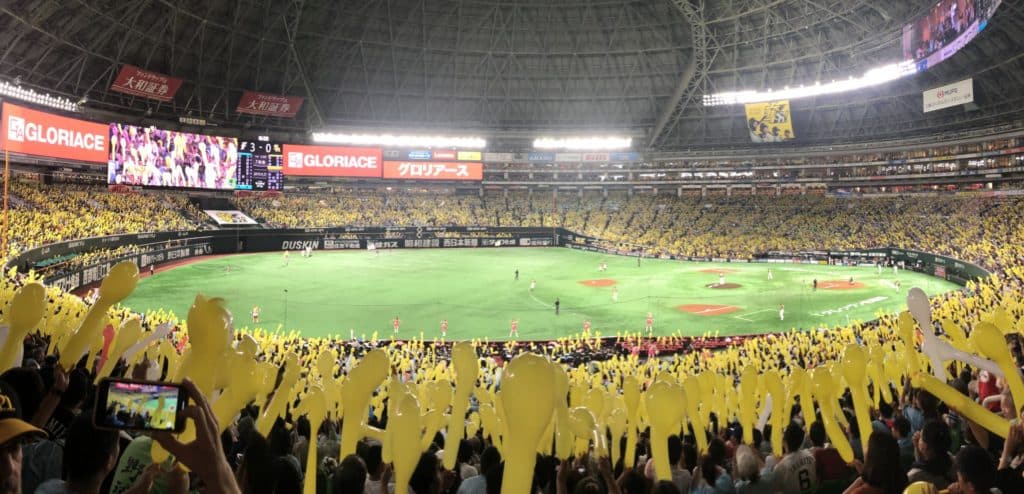
If you’re a fan of modern dynasties, this is the ballpark for you. The PayPay Dome plays host to the Fukuoka SoftBank Hawks, winners of five of the past six Japan Series, so you’re sure to see some good baseball played.
Beyond the team on the field, the Dome was built in 1993, and was the first stadium in Japan to feature a retractable roof (which looks really cool from the inside, in addition to being functional). Any baseball fan will appreciate the Sadaharu Oh museum nearby the park, where one can see a replica of the all-time home run king’s 1970s-era living room and the samurai sword he practiced his mighty swing with. The museum was also recently relocated and remodeled!
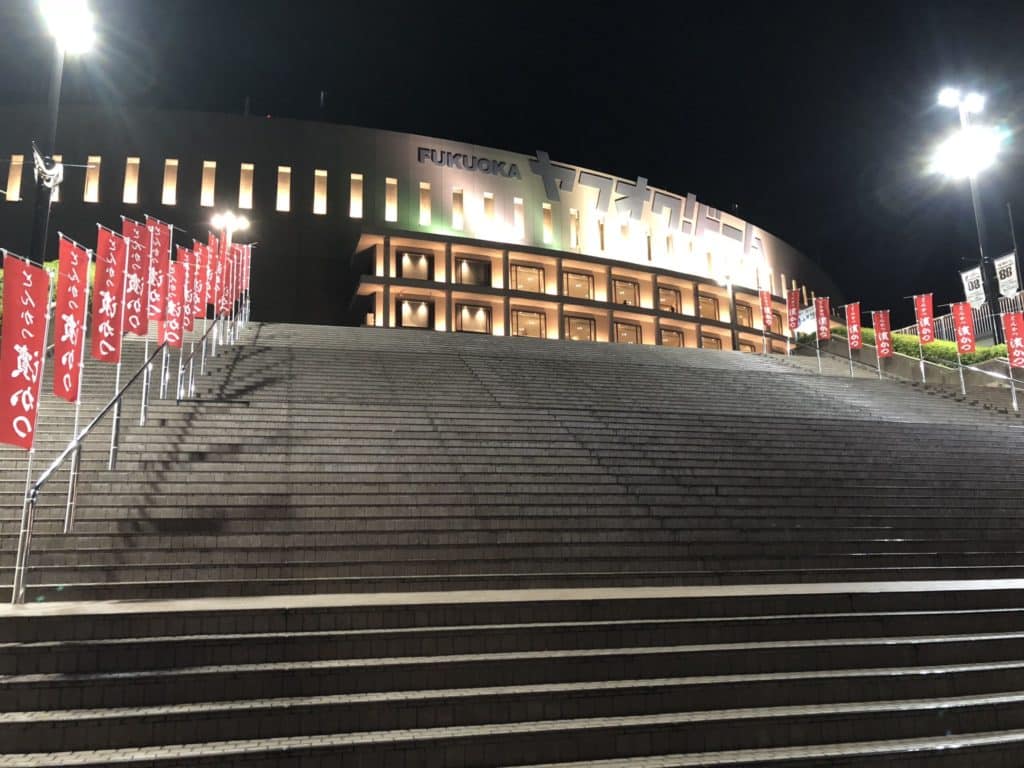
The PayPay Dome is a must for any Japanese baseball fan. For tourists, however, the long walk from the subway station and lack of other unique features might lead them wanting more. Fukuoka, however, is a wonderful city to explore.
8. Kyocera Dome Osaka (Orix Buffaloes)
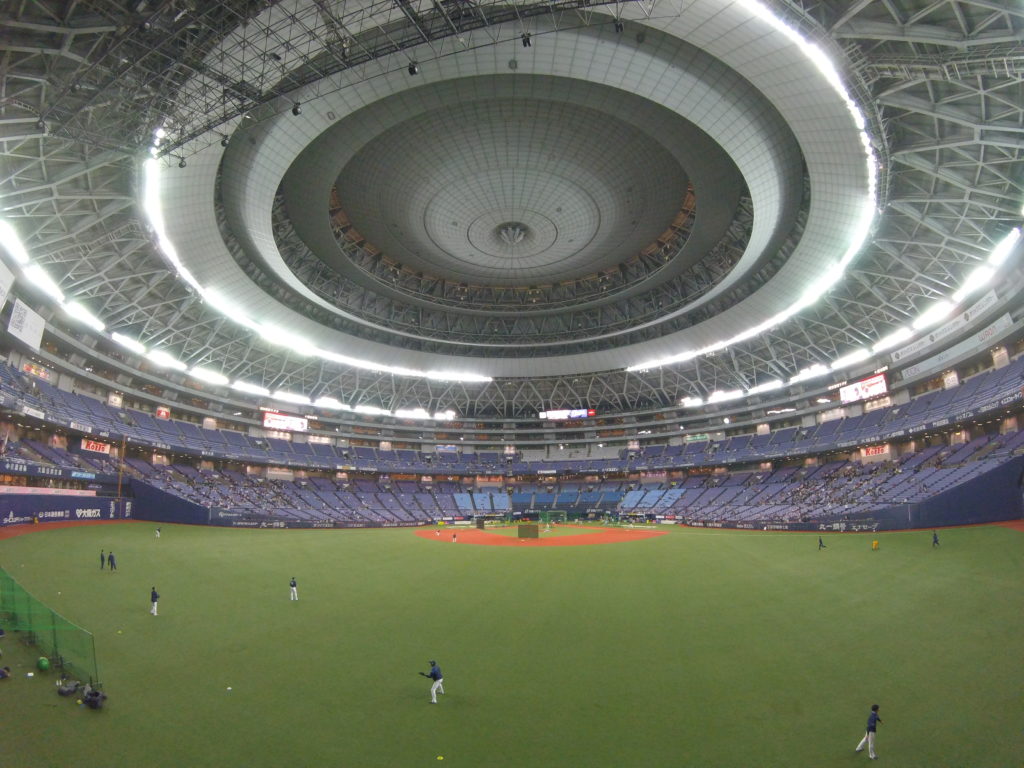
Also known as the Osaka Dome, this isn’t exactly high on many lists for the quality of baseball and relatively low fan spirit compared to other NPB teams. Built in 1997, the Dome plays host to the Orix Buffaloes, who haven’t won a pennant in 24 years, and the trip to Osaka to watch mediocre baseball isn’t high on many tourists’ list (the city has plenty of other attractions though).
But the Dome itself is, for lack of better words, really cool. Watching a game inside this modern stadium feels distinct from other stadiums for its modern architecture within, with the dome rising high and spacious overhead. It almost feels like you’re inside some huge space station big enough to house 122 meters from home to center.
If you want to feel like Emperor Palpatine with your baseball viewing, this is the park for you. Just don’t expect much “gooooooood” playing from the Buffaloes.
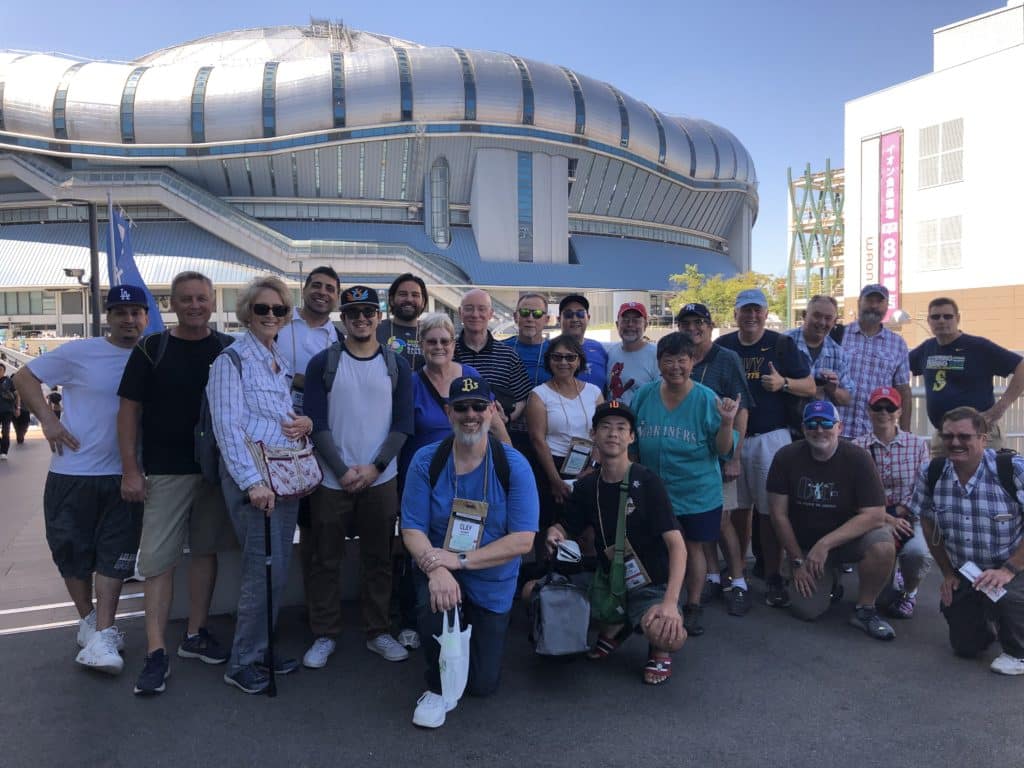
7th ranking stretch: Hotto Motto Field
A few eagle-eyed NPB fans noticed that our original list did not include Kobe Sports Park Baseball Stadium, also known as Hotto Motto Field. This open-air stadium was the former home of the Orix Blue Wave, who merged with the Kintetsu Buffaloes in 2004. The ballpark remains in NPB service, although on an irregular basis; the Buffaloes play several games there each season to give their Kobe-based fans a chance to see their team (they were scheduled to play eight games there before the COVID-19 pandemic), while the Hanshin Tigers play a few home games there during the annual High School Championship,.

While it is a gorgeous open-air stadium, we chose to not include it on our list due to its limited use. If you can find some way to catch a game there, however, we recommend you go!
7. Sapporo Dome (Hokkaido Nippon-Ham Fighters)

Another Dome! This one, playing host to the Hokkaido Nippon-Ham Fighters, was opened in 2001 and is known less for its ambience, and more for the amazing experience one has while in town.
The northern island of Hokkaido is one of the most interesting places for tourists to visit in Japan, as it features a wide variety of sites to check out and foods to eat. As a result, despite the need to fly or take an excruciatingly long train to Sapporo, which keeps this stadium lower on our list, fans of the opposition will often make the trip as an excuse to visit the city and surrounding area. Two JapanBall favorites are the Sapporo Olympic Museum and the Sapporo Beer Museum and Brewery.
The ballpark has a technologically advanced design, but at the end of the day, it’s just a big dome, with a long hike from the subway station to boot. It has some good history, playing host to the FIFA World Cup, Rugby World Cup, and even various skiing world championship events! Currently, the Hokkaido Consadole Sapporo soccer club of the J1 league shares the Sapporo Dome with the Fighters. More soccer will be played there at the upcoming Tokyo Olympics.

Oh, and it was home to Yu Darvish and Shohei Ohtani, so the Fighters always have fun talent to watch!
6. Tokyo Dome (Tokyo Yomiuri Giants)
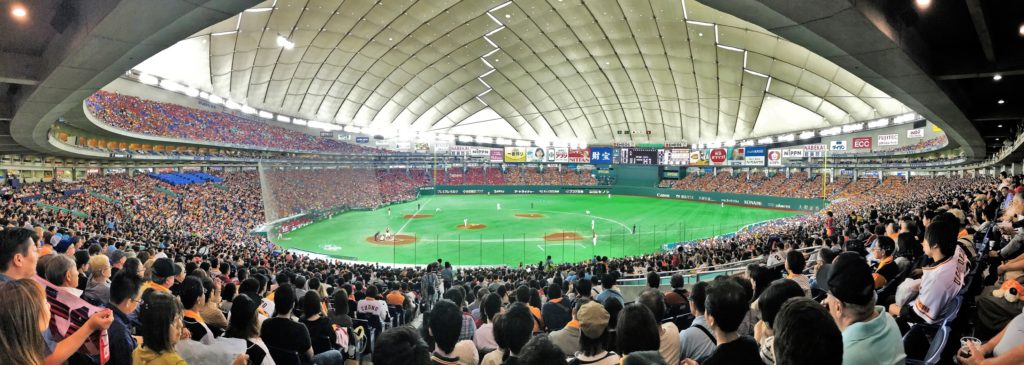
Took a while, but we finally got there. The Yankee Stadium of Japan, both in the team and the overall sensation one will experience while attending. Opened in 1985, “The Big Egg” is home to the ever-popular Yomiuri Giants, as well as numerous other fan experiences one can’t miss out on, including a roller coaster, spas, horse betting, the MLB Café, a Shake Shack, and even a traditional Japanese garden that is a zen haven in bustling Tokyo.
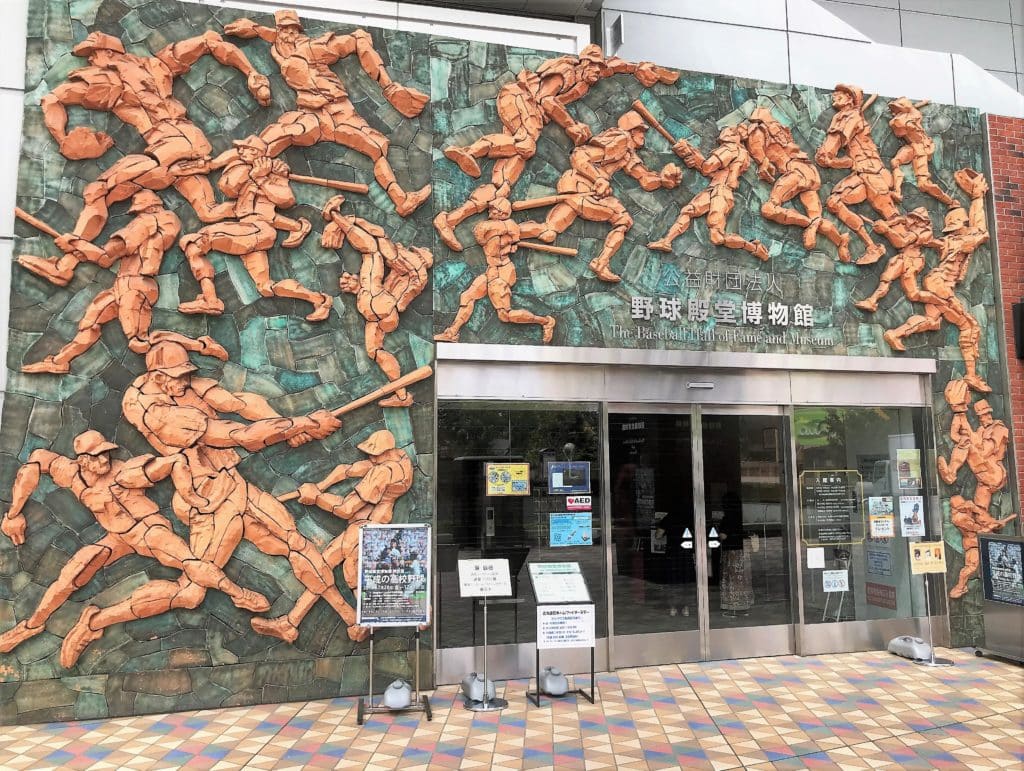
This is a necessary stop for any casual baseball fan visiting Japan due to the prestige of the Giants, the numerous attractions, and the Japanese Baseball Hall of Fame, which is attached to the Tokyo Dome. Although it’s extremely easy to access in Tokyo, sometimes the Dome and Giants’ experience leave a little more to be desired for the seasoned Japanese baseball fan, due to its more subdued, corporate crowd and uninspiring food options (by Japanese standards). If you do go, we recommend checking out the downstairs food court behind home plate for more interesting culinary choices.
Hosting NPB’s most famous team and many legendary moments such as Ichiro’s last game put the Tokyo Dome on the map. Beyond that, however, it’s just another dome.
5. Yokohama Stadium (Yokohama DeNa BayStars)
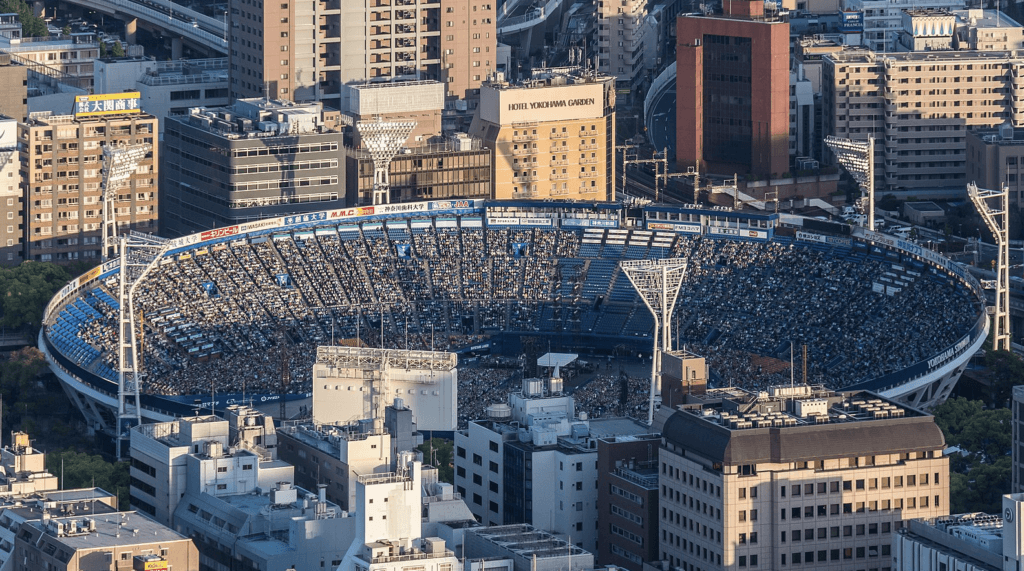
Cracking open our top five is the host stadium for Olympic Baseball in 2021, Yokohama Stadium. Home of the DeNA BayStars, it was opened in 1978 and shows similarities to Dodger Stadium, with a perfect symmetrical outfield and over 34,000 seats to boot, offering great views for all fans.
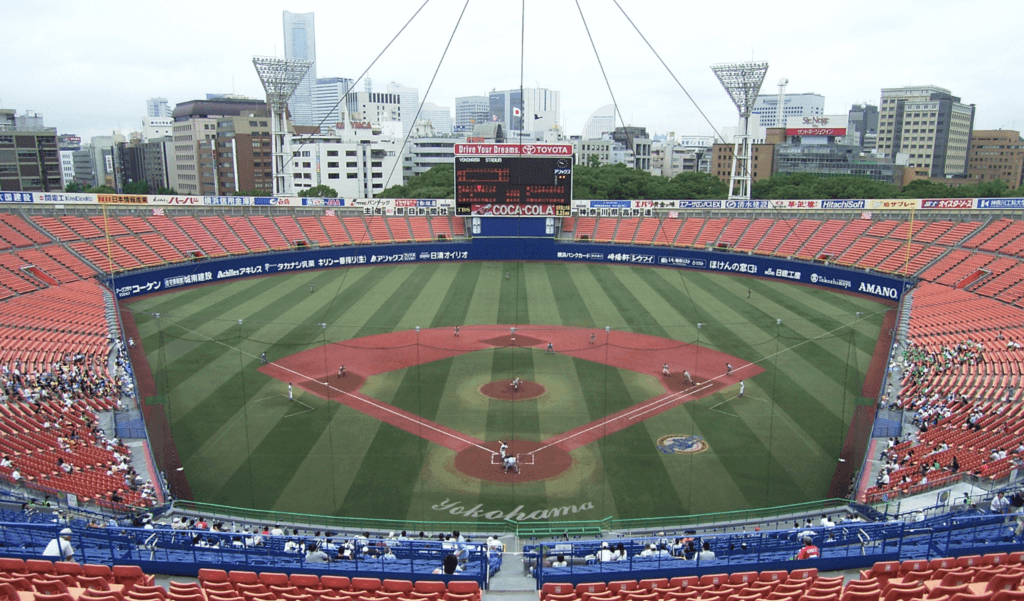
Yokohama, Japan’s second most populous city, is a great tourist destination. Even better, the ballpark is also located in the world’s biggest “China Town,” giving it a distinct culture and identity. Easily accessed by train from Tokyo, it allows tourists to gain a different metropolitan experience, and the numerous surrounding bars, breweries, and restaurants are a huge plus for any culture seekers. The ballpark, affectionately referred to as “Hamasta” (a combination of the words, “Yokohama” and “stadium”), is also home to the most electric relief pitcher entrance in NPB – check out closer Yasuaki Yamasaki’s epic journey to the mound!
The narrow concourse is a bit crowded at times, and the BayStars have only won two pennants over 70 years, but for fans looking for a fun time both inside and outside the park, this is a definite must.
4. Rakuten Seimei Park Miyagi (Tohoku Rakuten Golden Eagles)

Welcome to the modern era. Opened in 1950 and renovated in 2011 after the horrific earthquake and tsunami hit Sendai, this older park is home to the youngest franchise in the NPB, the Tohoku Rakuten Golden Eagles.

The young team is also the most progressive, and Sendai Park is filled to the brim with modern investments that just make sense, including the first use in NPB stadiums of cashless payments. The stadium also has the best option for craft beers, with the Eagles having their own label, and the carnival beyond the outfield fence creates a fun atmosphere for all involved.
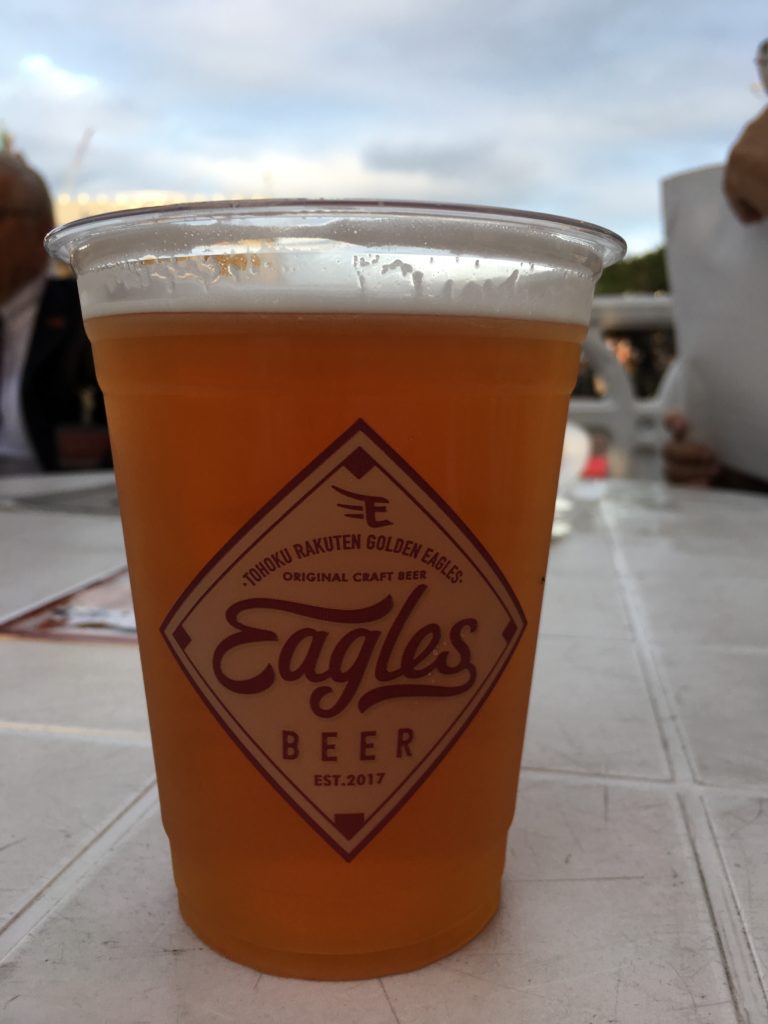
Sendai is about 90 minutes from Tokyo on the bullet train, making it an easy escape for the city for a day or two. For a fun, yet modern day to the ballpark, this might be the place to punch your ticket. Just don’t expect too much great baseball: the Golden Eagles have only won one title in their fifteen year existence.
3. Meiji Jingu Stadium (Tokyo Yakult Swallows)
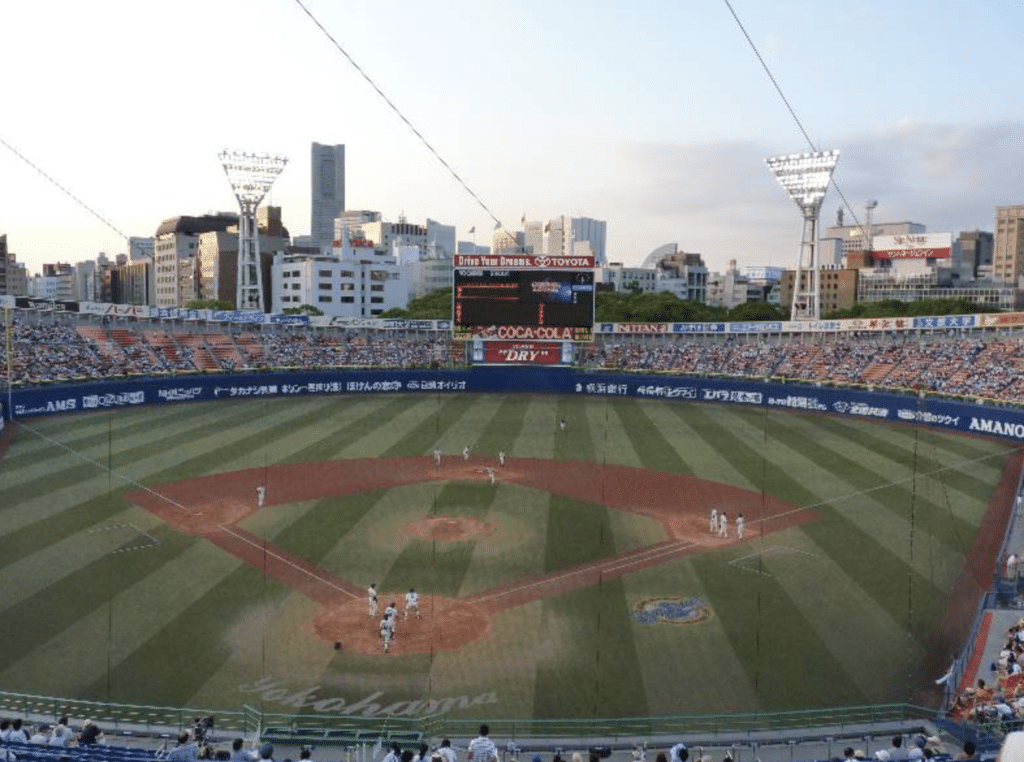
The second oldest stadium in Japan is also one of the coolest. Meiji Jingu was opened in 1926 as one of the first major stadiums in the country, and helped play host to MLB legends Babe Ruth and Lou Gehrig in their 1934 barnstorming tour of the country.
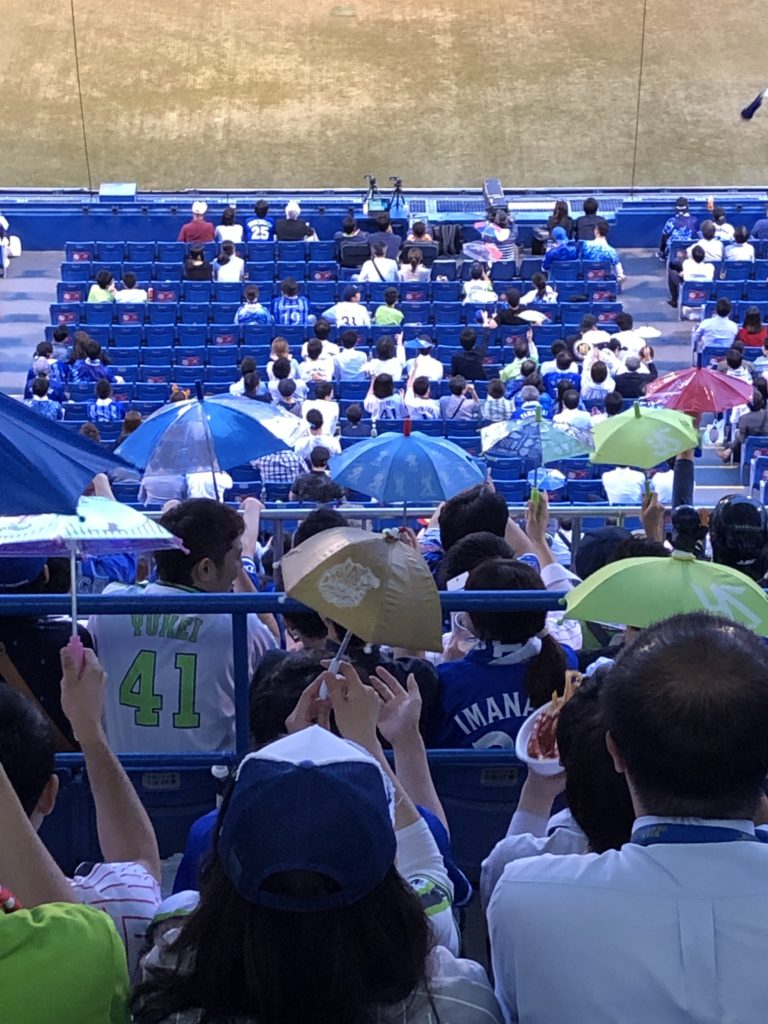
Nowadays, it plays host to Tokyo’s “second” team, the Yakult Swallows. Essentially in the shadow of the Tokyo Dome, the small ballpark offers a more intimate, baseball-driven experience than its domed competition a few stops away on the Sōbu Line. It’s location in central Tokyo makes it easy to get to from anywhere in the city, and the fan experience can’t be beat either, as the “Umbrella Dance” is one of the more famous fan traditions in the NPB.
Unfortunately, the stadium will be torn down following the Olympics to make room for a new plaza and Rugby Stadium; if you want to see this legendary stadium, you may want to start making plans.
2. Mazda Zoom-Zoom Stadium Hiroshima (Hiroshima Toyo Carp)
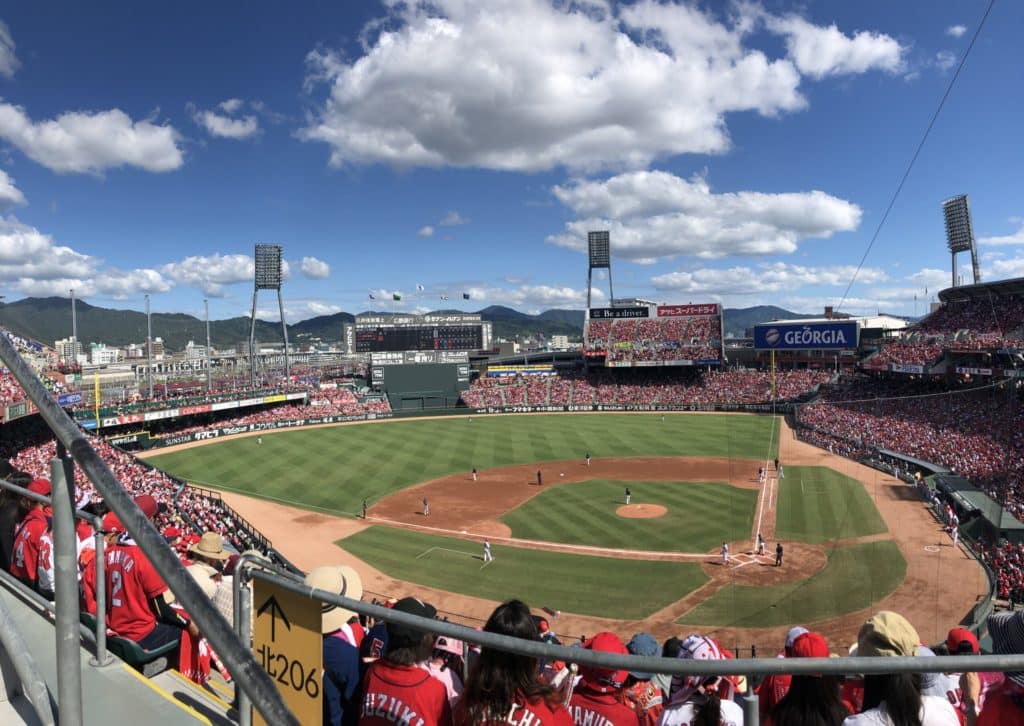
For MLB fans itching for great fan experience, scenic views, and fantastic baseball, this Hiroshima stadium is just the place. This home of the Hiroshima Toyo Carp was opened in 2009, and is deeply intertwined with their host city, as the government (and therefore the people of Hiroshima) owns a partial share.
Although a bit of a walk from the train station, fans will more than likely forget it as they pass by myriad of food vendors for a quick snack and wade their way through a “sea of red,” as the Carp fans are known for their color coordination in support of their teams. The concourse is walkable, the fans are rowdy, and the Carp aren’t a bad show either, winning three Central League pennants in the past five years.
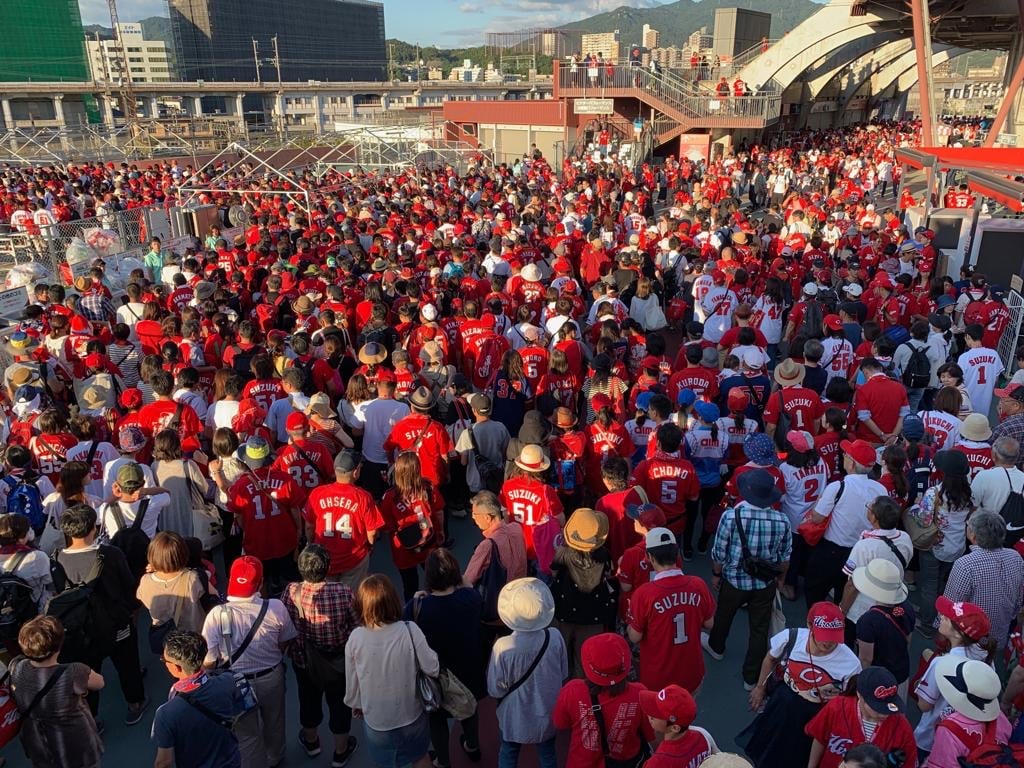
Beyond the game, there’s also the tragically beautiful Hiroshima Peace Park for those who wish to stop and pay respects to the fallen.
1. Koshien Stadium (Hanshin Tigers)
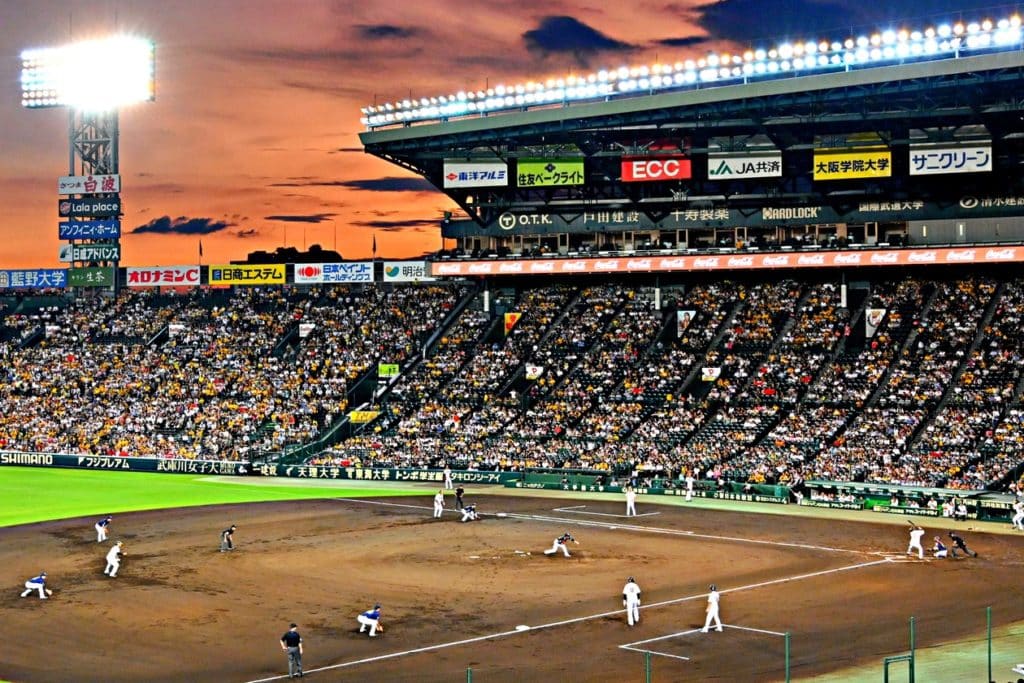
This is it. The grand-daddy of them all. Koshien is hallowed ground in Japanese baseball, as it plays host to the legendary National High School Baseball Tournament every August. High school players traditionally gather a small amount of the sacred infield dirt to take home, as proof that they were there. For the rest of us, photos will simply have to do.
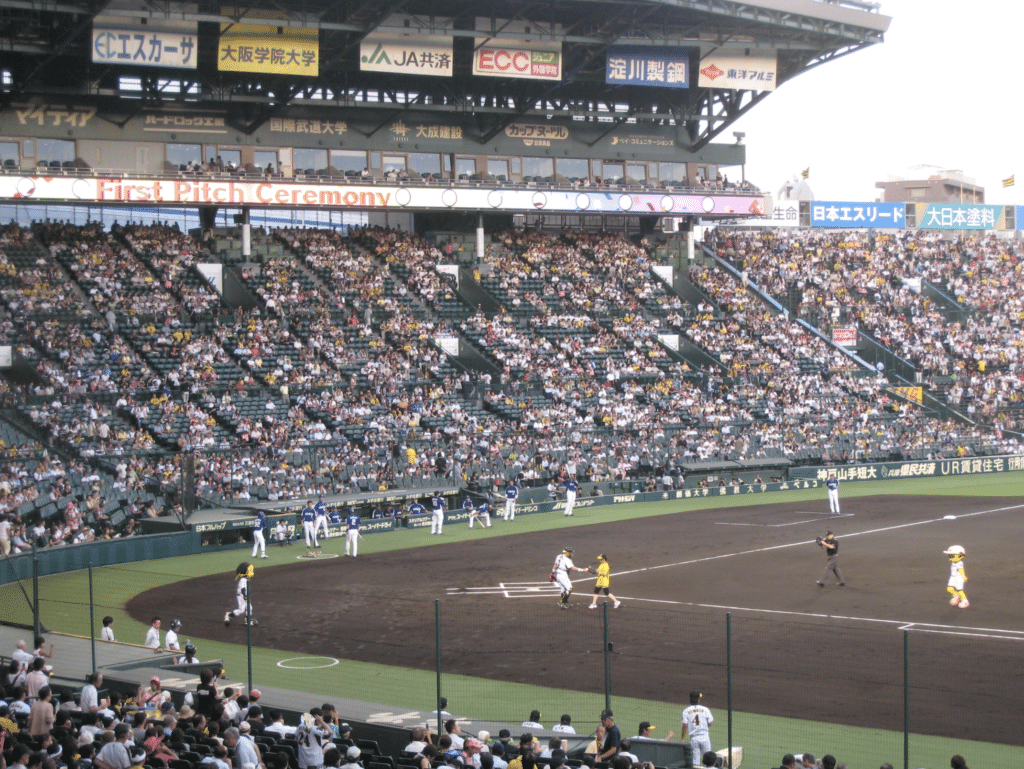
Built in 1924 for the high school championships, the Hyogo prefecture stadium is the last professional stadium in the world to feature an all-dirt infield. The park can seat almost 50,000 fans, with terrific sightlines all the way. Beyond the legendary two weeks in August, the stadium also plays host to one of the better-known teams in Japan, the Hanshin Tigers.
For any casual fan of Japanese baseball, this is the crown jewel of any voyage, as its history precedes it through the name alone: “Koshien.” The fan support of the often-losing Hanshin Tigers (whose 1985 Japan Series win remains their only title) is also unmatched. In addition, you can’t beat the view of the sun setting down the third base line.
It’s a legendary stadium with a legendary history. For that reason, it’s the most important to visit for any casual baseball fan – don’t forget your balloons though for the “Lucky 7” seventh-inning stretch!
Do you agree?
Of course, that’s just our list. But do you agree with it? Hit us with your own version if you want, or at least let us know what you think!
For more information about the different stadiums and their dimensions, check out our webpage detailing them! For more photos, check out this gallery of photos taken on one of our tours!

9 comments
Solid evaluation, but what about Hotto Motto (Green) Stadium in Kobe? Terrific open atmosphere with breezy concourse. Likely no games there this year, but Kobe is a bustling city without the sprawl of Osaka or Tokyo.
Good catch! We’ve updated the list to include it; it originally didn’t cross our radar due to its irregular usage. Beautiful stadium to see a game, if given the chance.
The Oh museum is no longer in Fukuoka Dome. It’s moved to a new building next door called something like E-ZO Fukuoka Boss
Noted! Thanks for catching that, we’ve updated it as such!
Where are the Swallows going to play once their stadium is demolished?
As of right now, I haven’t found much information about that. From what I can tell, they plan to rebuild the stadium where the old Rugby field is, and move the Swallows there in the time being. I’m not sure what construction will hold, but the Swallows will stay in the area. Check out this link for more information! https://english.kyodonews.net/news/2019/02/39c7559505ea-olympics-tokyos-iconic-baseball-rugby-fields-set-for-redevelopment.html
Hiroshima is technically the best stadium from an aesthetic stand point while I understand Koshien has the history. I would put Tokyo Dome lower. It just has no atmosphere whatsoever. It’s like the old Metrodome in Minny. A bland stadium covered by a giant baggie.
Great article! I’m from Ireland and lived in Japan 6 years. While there I also caught a game in all 12 ballparks, some on multiple occasions. I ranked 12. Seibu 11. Chiba 10. Tokyo Dome 9. Fukuoka 8. Kyocera 7. Nagoya 6. Sapporo 5. Swallows 4. Rakuten 3. Yokohama 2. Koshien 1. Hiroshima…..I’m a Carp fan!!
This is awesome I love Japanese baseball.